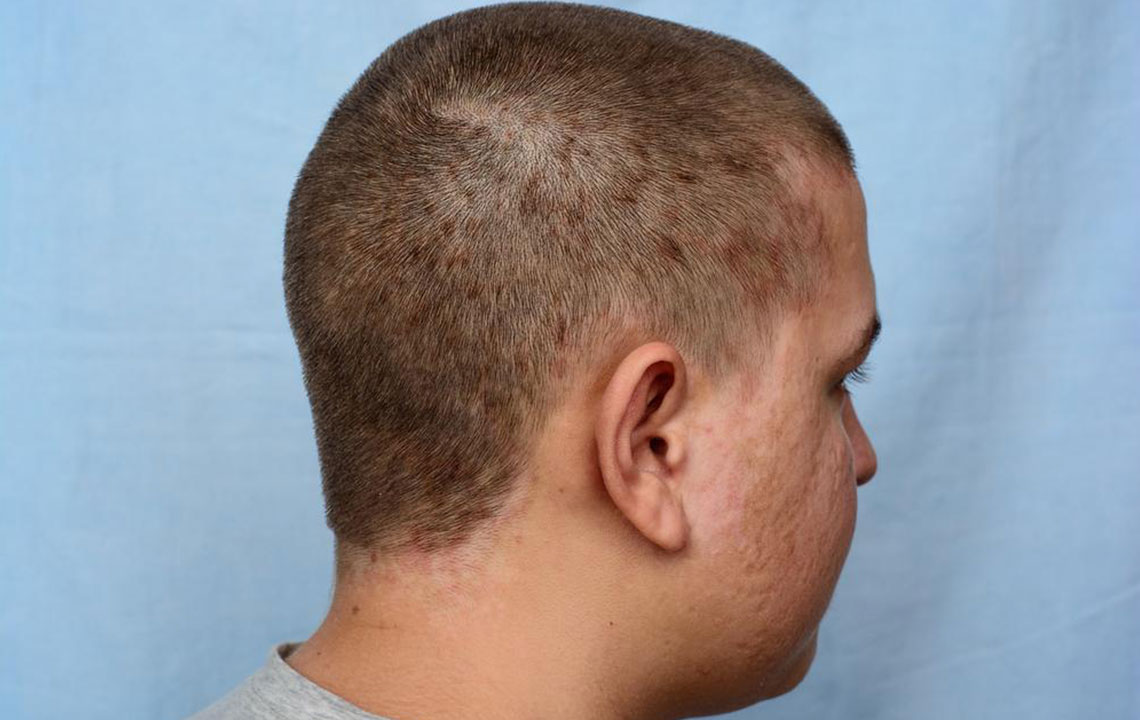Causes and Effective Treatments for Atopic Dermatitis

The skin is the largest organ in the body and our first line of defense against the outside world. Since the skin is so visible, it is an important part of our identity, which is why skin conditions are often so hard to deal with.
Atopic dermatitis is a chronic skin condition that begins in childhood and often continues into adulthood. Atopic means a tendency to develop skin allergies, and dermatitis is an inflammation of the skin.
Atopic dermatitis is a common condition that usually begins in the first year of life. It results in red, itchy, and swollen eruptions on the skin. These skin eruptions may exude a clear fluid when scratched.
Atopic dermatitis is also called eczema or atopic eczema. In childhood and infancy, the rashes and eruptions can cover most of the body. In children and young adults, the rashes are concentrated over the knees, elbows, hands, and feet.
Atopic dermatitis is an allergic reaction. It is commonly associated with asthma, hay fever, and other allergic conditions.
In atopic dermatitis, the skin becomes red, dry, and inflamed. Often, these eruptions develop into blisters and may cause scarring.
Atopic Dermatitis: Pictures Of Pain
Atopic dermatitis usually manifests in early infancy or childhood. Sometimes the condition will subside for years and manifest again in adulthood.
Symptoms of atopic dermatitis include:
- Dry, scaly skin all over the body
- Itchiness
- Raised, red lesions over the folds of skin like the elbows, knees, and neck
- Scratching the lesions releases a clear fluid
If you think you may have atopic dermatitis, pictures and other visual comparisons may be helpful in judging if you have similar lesions.
Atopic dermatitis lesions over the eyelids are characteristic of the condition. Post-inflammatory hyperpigmentation over the eyelids, cheeks, and neck is common. Atopic dermatitis pictures are a great way to familiarize yourself with the appearance of these signs.
Itching and subsequent scratching of the lesions can lead to secondary bacterial infections which will make the lesions scar over. Furthermore, scratching only worsens the redness and irritation of the skin.
Causes Of Atopic Dermatitis
There is no known definite cause of atopic dermatitis but there are a few hypothesis:
- Hygiene hypothesis
According to this hypothesis, children who are not exposed to allergens in early infancy and childhood will not be able to tolerate them later. A more ‘hygienic’ environment actually weakens the immune system and makes it more likely that the child will develop allergies. If you get confused with the regular skin allergies, have a look at the atopic dermatitis pictures for a clear insight. - Genetics
People with atopic dermatitis are more likely to have relatives who have allergies, hay fever, and asthma. - Hard water
Hard water which contains calcium carbonate may trigger atopic dermatitis in some children when drunk.
Treatment Of Atopic Dermatitis
There is no cure for this skin condition but there are ways to manage it.
- Medication
Topical corticosteroid creams have been proven to help treat atopic dermatitis. They help control the inflammation and irritation. In severe cases, steroids can be taken orally but only for short periods of time. Antidepressants and Naltrexone may be prescribed to help control the itching associated with this condition. Systemic immunosuppressants can also help reduce the inflammation. Antihistamines can also be used to deal with night time itching. Antibiotic therapy may be needed to treat secondary bacterial infections of the skin lesions. - Light Therapy
This is a relatively new form of treatment for atopic dermatitis. In this form of therapy, the skin and affected areas are exposed to broad or narrow-band ultraviolet light. You can also check the pictures of atopic dermatitis on the internet for further understanding. The UV light has a local modulatory effect on the immune response. However, UV light can cause skin cancer and lymphoma so its use is restricted. - Lifestyle And Diet Changes
There is some evidence that vitamin D supplements may help ameliorate the symptoms of atopic dermatitis. Fatty foods and probiotics may also help. Regular bathing and application of moisturizers will prevent the skin from drying out and becoming itchy. People with atopic dermatitis should bathe in lukewarm water to improve the hydration of the skin. Certain clothing fabrics like wool, nylon, and polyester should be avoided. Along with this, avoid chlorine, mineral oils, solvents, dust, and cigarette smoke. Some types of makeup and perfumes may aggravate the symptoms. Look online and find atopic dermatitis pictures with makeup and other cosmetics to find brands that are gentler on the skin. During the winter and in other dry, low humidity weather, apply extra strength moisturizers on the skin.
Home remedies for atopic dermatitis
- Coconut Oil
Coconut oil is a very versatile product and a great natural moisturizer. - Sea Salt Spray
Using a sea salt spray over the affected skin or mixing sea salt in your bath water is a good way to get some extra moisturization. Sea salt also has mild antibacterial properties which will impede the spread of secondary infections. - Cod Liver Oil
Some people with atopic dermatitis have lower levels of fatty acids in their bodies. Supplementing with fish oil is known to improve the itching associated with this condition. - Honey
Honey is antibacterial, antifungal, and a skin relaxant. It can also help with the hyperpigmentation and scarring of the skin lesions. Atopic dermatitis can be a debilitating and painful skin condition. Fight the stigma and get yourself specialized help if needed. Atopic dermatitis pictures can help you compare severity and find solutions.
If you still have doubts, you can check atopic dermatitis pictures online to confirm the skin disorder. Keep your skin hydrated and clean to help treat atopic dermatitis.


